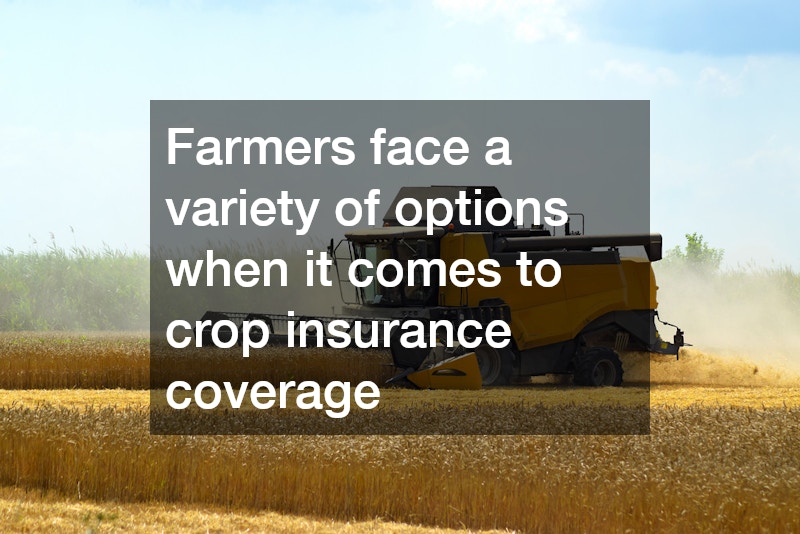How Accurate Farm Crop Insurance Quotes Keep You Safe
Learn more about the importance of accurate farm crop insurance quotes in ensuring the financial safety and security of farmers. Explore key questions and concerns related to crop insurance and how accuracy plays a pivotal role in protecting agricultural investments.
Factors That Influence Crop Insurance Quotes
Several key elements contribute to the formulation of crop insurance quotes. These factors include the type of crops, the geographical location, historical weather patterns, and the specific risks associated with growing particular crops in certain regions.
Each of these components plays a crucial role in determining how much coverage a farmer will need and how much they can expect to pay for it.
The insurance provider will assess the likelihood of loss by considering these variables, leading to varying premium rates. Farmers should consult with agents who can tailor a quote based on their unique circumstances. Accurate data collection and analysis ensure that quotes reflect the true value of the potential risks farmers face each season.
Moreover, working with local agricultural experts can enhance the quote’s precision. These experts often have valuable insights into regional trends and can help farmers select appropriate crops for their specific conditions, significantly impacting the quotes they receive. Understanding local agricultural economics can also lead to better clarity during the insurance process.
How Accurate Quotes Prevent Underinsurance
Underinsurance poses a significant risk to farmers, particularly when disaster strikes. If the insurance coverage does not align with the actual crop value or potential loss, farmers can incur substantial out-of-pocket expenses that jeopardize their financial stability. Accurate quotes ensure that farmers understand their coverage needs comprehensively.
Farmers can easily find themselves underinsured if they do not actively engage in the insurance process. By securing precise quotes based on thorough assessments of their production capabilities, farmers can prevent scenarios where they find themselves without adequate coverage when faced with unfavorable events such as drought, hail, or pest infestations.
The financial implications of underinsurance can be devastating. Accurate quotes mean that farmers can confidently plant crops knowing that they have the appropriate safety net should calamities occur. Protecting their investments becomes a matter of accurately assessing the values and risks associated with their crops before it’s too late.
The Role of Crop Yield Data in Insurance Quotes
Crop yield data is paramount in determining the value of insurance coverage. Accurate yield data helps insurers gauge the expected output of different crops under typical growing conditions. This forms the baseline for calculating quotes that reflect the potential financial value of the crops a farmer plans to cultivate.
Utilizing historical yield data allows for better risk assessment and more tailored insurance products. When farmers provide detailed yield records, it aids insurers in crafting coverage that aligns conveniently with the farmers’ actual production capabilities. This precision minimizes the gaps in coverage, ensuring farmers are adequately protected.
In addition, ongoing updates to yield data throughout the growing season can further enhance the accuracy of insurance quotes. By continually monitoring crop performance and adjusting expectations accordingly, farmers can better manage their risks and receive accurate quotes that adapt to real-time conditions, providing enhanced financial security.
How Different Types of Coverage Affect Quotes
Farmers face a variety of options when it comes to crop insurance coverage, and understanding these options is crucial for obtaining accurate quotes. Different types of coverage—such as revenue protection or area-based insurance—each carry unique implications for pricing and risk exposure. These differences directly affect the quotes farmers receive.
Additionally, the choice between a single peril policy and a multiperil policy can have significant consequences on premium costs and coverage limits. Multiplying coverage typically leads to higher premiums but may also provide a broader safety net, protecting against a multitude of risks. Farmers must weigh these options according to their needs and risk tolerances.
Consulting with insurance professionals familiar with the varied types of coverage can illuminate these complexities. A better understanding of how different policies impact quotes can lead to more informed decisions, ensuring that farmers not only receive competitive pricing but also the best possible protection for their investments.
What Farmers Should Look for in an Insurance Provider
When selecting an insurance provider, farmers should consider several key attributes that directly influence their experience and the quality of service they receive. First and foremost, the expertise and responsiveness of the insurance provider are essential. An agent with deep industry knowledge can help assess risks accurately while providing informed recommendations.
Furthermore, farmers should evaluate the reputation of potential providers. Researching customer reviews and industry ratings can uncover valuable insights into how effectively the provider handles claims during stressful times. A responsive and reliable provider is crucial in times of need, especially when navigating complex claims processes during harvest loss situations.
Finally, transparent communication is vital. Farmers should seek providers that make the insurance process straightforward and easy to understand, ensuring no hidden fees or confusion around coverage. A trustworthy insurance partner will help farmers grasp their coverage requirements, the accuracy of their quotes, and how best to safeguard their financial investment throughout the growing season.
Accurate farm crop insurance quotes are essential for safeguarding farmers’ investments. By understanding the factors that influence these quotes, farmers can make informed decisions that enhance their financial resilience against crop loss. This knowledge empowers farmers to navigate the complexities of insurance, ensuring they have the right coverage to protect their livelihoods.

